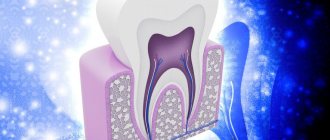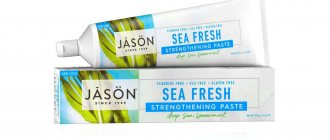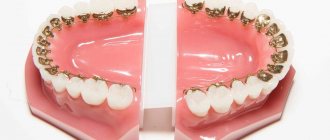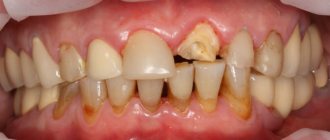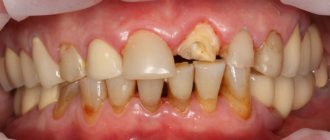There are a number of reasons (trauma, caries, short crown) why only the root and a small part of the crown remain from the tooth, and the rest of the dental tissue is lost. Until recently, in this case, fillings, a prosthesis were installed, or a tooth was removed. Currently, it is possible to use restoration options that allow you to recreate the original appearance of the tooth. The restored tooth looks natural and aesthetically pleasing. An important condition is that the root must be intact. Computer technology is used to create a copy of the crown of a future tooth.
Need for expansion
The question of the advisability of this operation can hardly be classified as controversial. With the exception of a number of contraindications (which will be discussed a little later in the corresponding section of this review), the decision to grow teeth turns out to be truly correct from both an aesthetic and functional point of view.
The technology currently used allows for prompt and high-quality restoration of worn teeth, as well as completely eliminating the consequences of chipping. And if for the rear, hidden from prying eyes, units of the dentition, the main parameters are reliability and practicality, then the front row, which is in plain sight, should also have excellent presentability. Fortunately, today all these problems are completely solvable.
For the restoration of primarily molars, a composite material is often used, which in its physical, safe and aesthetic properties is as close as possible to the natural original. As a result of the restoration, the incisors and molars are completely restored to their original natural shape and color.
What is dental restoration
Restoration of baby teeth in children is carried out in the following cases:
- for damage caused by trauma;
- due to complicated caries.
Dental injuries in childhood are common. At the children's dental clinic "Natadent" we are ready to provide timely and qualified assistance. According to statistics, every third child suffers a tooth injury during sports games or vigorous activity.
By acting correctly, you can even save a knocked out tooth:
- Regardless of the severity of the injury, you should come for an examination to a pediatric dentist;
- take a photo to assess the nature of the damage;
- if displaced, the tooth must be strengthened by applying a splint or in another way at the discretion of the doctor;
- Deliver the child, along with the knocked out tooth, to the dentist’s office within 30 minutes.
Important! A knocked-out tooth cannot be picked up by the root, washed with water or treated with antiseptic solutions - this can make the process of its healing impossible and complicate restoration. It must be carefully taken by the crown and placed in saline solution, on the child’s cheek or in another biological environment.
If a piece of enamel breaks off from an injured tooth and dentin is exposed, then it cannot be left in this form. It is necessary to see a dentist and restore the damaged edge. Through a thin layer of dentin, pathogenic bacteria will enter the pulp and cause pulpitis. This can lead to tooth decay and costly treatment.
The Natadent clinic has all the possibilities for preserving teeth, restoring them and restoring them. We are sure that tooth injury is not a reason for losing it.
Extension methods
If we talk about extension methods, there are two of them:
- straight,
- indirect.
The first allows you to restore the incisor during a one-time visit to the dentist. The composite material is applied over the dental crown. The use of this technique is possible only in the presence of minor damage.
As for the indirect option, specialized overlay materials are used for its implementation: veneers, crowns, as well as various inlays.
A specialist carrying out such restoration activities is obliged to find a solution that will be the most rational and the only correct one for each individual situation. The choice of technique depends, in particular, on the following parameters:
- root integrity,
- condition of the bone-jaw tissue,
- area of the dental crown,
- condition of the gum tissue.
Below we will discuss the most popular restoration methods, which include:
- filling,
- pins,
- tabs,
- veneers,
- photopolymers,
- photocomposites.
Sealing
This is the simplest answer to the question “how does teeth building happen?” This method is chosen when the patient’s bone tissue is practically intact. Most often, filling is used when the enamel is excessively thin, there are significant interdental spaces, and damage to the front teeth.
This method has not one advantage, but several. Firstly, thanks to the tandem of modern technologies and specialist skills, the result is very accurate. Secondly, the plastic composite used has many shades, among which you can choose a color scheme that is as close as possible to natural. Thirdly, the composite material has a high degree of adhesion, growing tightly and forming a single whole with bone tissue.
Extension on a pin
If the root is preserved, a pin is often used to carry out restoration work. The latter can have different shapes and sizes, which allows you to choose the most optimal option in strict accordance with the anatomical features of the patient’s oral cavity. Most often, this method of extension is used to eliminate chips on the front teeth.
Modern dentistry uses, as a rule, 4 types of pins:
- gutta-percha (flexible, but prone to rapid damage),
- carbon (has good strength characteristics and is relatively inexpensive),
- fiberglass (the most rational option for the restoration of front teeth),
- anchor (the strongest, most reliable and durable).
Tabs
In another way, this method of extension is called microprosthetics. Its essence lies in the use of specialized inlays, which in fact are individually made fillings.
If there is a carious cavity on the chewing part of the tooth, there is a high probability of empty cavities forming. Of course, in this case, you can also get by with regular filling. However, only an inlay can completely fill the cavity and also prevent changes in the bite.
Often, individual inlays are made of ceramic or porcelain. Such materials perfectly retain the original shade and do not lose other original characteristics, which, as has been said many times, is the most optimal combination.
Extensions using inlays are usually practiced in situations where most of the crown is chipped. If the area to be restored is invisible when smiling, an individual inlay can be made of metal, the prices of which are noticeably lower, and the practical properties are in no way inferior to ceramics and porcelain.
Veneers
We are talking about thin porcelain plates, the lining and fixation of which is carried out on the outer part of the tooth. This option is used for a variety of damage to the anterior units of the dentition.
As a result of using veneers, your smile becomes flawlessly even. Moreover, the material used usually lasts for about 10 years, without losing its original shade even with systematic smoking, as well as drinking coffee and all kinds of carbonated drinks that contain a coloring pigment.
However, veneers also have some disadvantages. Firstly, before installation, careful grinding of the tooth is required so that the latter does not protrude from the general row in the future. Secondly, due to the ideal proportions obtained as a result of such extensions, the naturalness of the smile is sometimes somewhat lost.
Photopolymer
The use of photopolymers is relevant in case of significant wear of the crown or extensive carious damage. To strengthen the result, during the process of filling the affected areas, the material used is exposed to ultraviolet radiation.
Important warning: if there is inflammation in the oral cavity, the use of photopolymers is contraindicated.
Composite
The main purpose of photocomposites is to eliminate cosmetic defects. The latter include cracks, chips, and other minor damage.
The material hardens under the influence of an ultraviolet lamp quite quickly, ultimately obtaining the required shape. One visit to the orthopedic dentist - and such a cosmetic issue is guaranteed to be resolved.
What is dental restoration?
Dental extension or restoration is a procedure for restoring a damaged tooth using modern technologies and materials in aesthetic dentistry. External defects in the oral cavity are eliminated in such a way that the restored teeth are in harmony with the rest and are completely indistinguishable from them.
A specialist in the field of aesthetic dentistry will evaluate the condition of the damaged and adjacent teeth, and the characteristics of the bite. After which he will be able to answer the patient’s question about the possibility of recovery. If this method is not suitable based on the clinical picture, the doctor will suggest considering the possibility of another method. For example, installing veneers. If there is such a possibility, after agreeing on all the details with the patient, the specialist will be able to tell how much it costs to restore a particular tooth.
Modern aesthetic dentistry, in particular the direction of restoring the shape of a tooth, has a number of terms that denote, first of all, the fact of restoration, and secondly, the achievement of high aesthetics. Among them are aesthetic restoration, cosmetic restoration, artistic restoration. These terms are synonymous and refer to dental restoration with a highly attractive result.
Which restoration method to choose?
There is no clear answer here for obvious reasons. It all depends on the degree of damage that the crown and root have. If we talk about the direct method, it is as gentle as possible, since its implementation does not require first removing the nerves. The composite material is applied to the crown in layers. At the same time, the tooth is still “alive” and is able to perform its original functions.
It is not possible to use the indirect method without first removing the nerves. An orthopedist implants inlays and pins into the root canals of a tooth with a dead nerve, after which a layer-by-layer application of composite material is performed. If the patient has significant damage to the crown, this extension option is the only possible one.
Reinforcing a broken tooth onto a pin
If the tooth root is healthy, the dentist can model an exact anatomical copy of its crown using computer technology. An x-ray is performed first.
The procedure is carried out as follows:
- A metal pin is installed into the sealed root canal;
- A filling compound is introduced, from which a new crown is formed.
Advantages of the method:
- Possibility to save the tooth root;
- High strength of the restored tooth due to double fasteners - the root and the pin.
Pins are used in cases where it is required:
- Building up the foundation;
- Strengthening a pulpless tooth;
- Reconstruction of a damaged tooth;
- Creating the basis for crown formation;
- Restoration.
The newest development is the use of fiberglass pins.
Extension of various types of teeth
Depending on the type of teeth, the extension process may have some features. But since the most common techniques have already been discussed above, the focus in this section will be on the main problems, as well as the reasons for their occurrence.
Front
According to statistics, the front teeth are mechanically damaged quite often. As a result, chips, cracks and other defects form. It is also not uncommon for a fairly large fragment of a tooth to break off due to injury.
Another problem with the front teeth is abrasion. And if the patient has a direct bite, then such a problem becomes completely pathological.
Special types of abrasion include the so-called “horseshoe” abrasion, which is typical for those who like to chew seeds.
Extensions using composite materials will help solve all of the above problems, as well as eliminate gaps between teeth.
Chewable
The destruction of chewing teeth is also not uncommon. The main reason is caries (especially deep caries), as a result of the treatment of which significant cavities are formed, filled with filling materials.
The use of modern gentle techniques makes it possible to preserve the tooth root even in cases that were previously considered hopeless. As for the restoration of the coronal part, the most effective methods in this case are the installation of an inlay and a crown.
How to grow your front teeth?
There are several ways to build up your front teeth. In most cases, it will be possible to restore functional and aesthetic characteristics using photocomposites. By applying the material layer by layer to the defect site, the doctor can completely eliminate the defects. The only negative: in order to preserve the aesthetic properties for as long as possible, you will have to adhere to some dietary restrictions at home, as well as regularly seek professional teeth cleaning.
If more than 70% of the crown part of the tooth is missing, then it is ideal to turn to an orthopedic technique. Modern ceramics used to make crowns make it possible to perfectly imitate the texture of a tooth and achieve a match in color and transparency to natural enamel.
Another current way to correct teeth in the smile area is to build teeth using veneers. They can be composite and made by a doctor directly in the patient’s mouth, as well as ceramic. The production of these onlays takes place in a dental laboratory, after which they are glued to the teeth using special cement. The thickness of the linings is small. However, in order not to excessively increase the tooth surface with such a procedure and to ensure strength, grinding of the tooth surface will be required. Videos available in the public domain will allow you to verify the careful approach of specialists to such a procedure.
Advantages and disadvantages of extensions
The benefits of dental extensions include:
- Possibility of ensuring reliable tooth restoration. In some cases, an extended tooth is not much inferior in wear resistance and durability to a natural one.
- Natural result. Thanks to modern materials, it is possible to choose not only the desired shade of the tooth, but also provide the necessary transparency. The extended tooth will not be distinguishable from its neighbors. A natural smile is guaranteed.
- High efficiency of the procedure. The result is achieved even if even a tooth from which practically nothing remains is subject to restoration.
- Possibility of quickly obtaining results. Depending on the chosen method, 1-2 visits to the doctor are enough.
Cons of teeth extensions:
- Quite a high cost;
- The inability to clearly determine how long the service life of a tooth will be;
- Dependence of results on the professional skills of the doctor.
Contraindications
There are few contraindications to dental extensions. Among them:
- Complete destruction of the crown part of the tooth;
- Tooth mobility due to damage to periodontal tissues;
- Bruxism;
- Allergic reactions to the materials used;
- Severe dysfunction of the temporomandibular joint.
The decision on the possibility of using a particular technique in each specific case is made by the dentist.
FAQ
- What kind of doctor does dental extensions? Depending on the technique used, a dentist-therapist or an orthopedist will solve the problems.
- Will it be possible to build up baby teeth? Is such a procedure necessary? At the present stage, using modern filling materials, it is possible to solve the problem with baby teeth. However, treatment is complicated by the fact that it is difficult to ensure a static position for the child during the manipulation. Often you have to resort to anesthesia. The need for such a procedure is justified by the fact that ignoring it will lead not only to deterioration of aesthetics, but also to problems with bite and diction disorders.
Price
The cost of tooth augmentation varies widely depending on the technique used. In this case, the most accessible way is to use therapeutic approaches. The use of orthopedic techniques will be more expensive. Due to the complexity of the technology, the installation of ceramic veneers will be especially expensive. The price of such a procedure also increases due to the fact that the entire smile area is subject to correction. To achieve the desired result, you will need to install about 8-10 units of overlays. At the same time, if you are counting on having your teeth augmented in a center whose core business is to provide the population with high-quality but affordable services, contact the Evita clinic.
| Cosmetic tooth restoration with light-curing materials | 10550 rub. |
| Ceramic inlay (1 unit) | 35400 rub. |
| Ceramic veneer (1 unit) | 56,000 rub. |
| Lumineers veneer (1 unit) | 82700 rub. |
| Veneer Emax (1 unit) | 48,000 rub. |
Pros and cons of extensions
The objective advantages of artistic restoration include:
- safety (the method is suitable even for children),
- possibility of restoration even with significant chips,
- high degree of strength of the extended part,
- natural appearance.
As for the disadvantages, these include the comparative high cost. Despite the variety of methods and price categories, most often this procedure is not cheap.
Another disadvantage is that to ensure safe conditions for the restored area, it becomes necessary to wear a mouth guard during sleep.
How to choose between prosthesis and extensions?
- Tooth extension is a whole complex of dental procedures, including therapeutic and restoration procedures. The main task is to hide obvious defects and return the tooth to its previous appearance. Modern technologies help not only restore a tooth, but also make it better - hide irregularities and give an even shine. The components that are the basis of the material for teeth extensions do not harm the body.
- A crown is something like a “shell” that is installed on a damaged tooth using cement or a pin. It is important to remember that making a crown takes a long time. Also, using crowns is a more affordable option than extensions. This method allows you to restore a badly damaged tooth, as well as give a person a healthy smile.
Each method has its own advantages. If you choose what will be better, first of all you need to proceed from the existing conditions.
- When the tooth is not badly damaged, the doctor builds up the lost part.
- If the destruction exceeds 75%-80%, then the dentist installs a crown.
Indications and contraindications
The procedure is recommended for the following problems:
- cracks and chips,
- enamel damage of various types,
- injuries resulting in disruption of the integrity of bone tissue,
- the impossibility of restoring the shade of enamel through cleaning and whitening procedures,
- malocclusion,
- high degree of enamel wear,
- loss of part of a tooth due to caries.
There are also situations in which extensions are contraindicated:
- the patient has individual allergic reactions to the filling materials used,
- the impossibility of isolating the area of the oral cavity where the extension is expected from moisture (under such conditions it is impossible to achieve high-quality drying and fixation of the composite),
- bruxism (if a crack in the enamel appears due to grinding of teeth during sleep, it is necessary to initially get rid of bruxism; otherwise the likelihood of chipping of the extension material is quite high),
- early age (pins are not installed for children; other acceptable methods of extension are not used for untreated caries, as well as some other diseases).
Contraindications and indications for tooth augmentation
Indications for the use of dental extensions
The main indications for dental augmentation are:
- there is a need for aesthetic restoration of the front teeth;
- natural anomalies of the dentition;
- increased abrasion of enamel and other tooth tissues;
- the presence of chips or other defects in the crown of the tooth resulting from injury or caries;
- carious destruction of the dental crown by more than half;
- the presence of wide gaps between adjacent teeth;
- noticeable change in enamel color.
Contraindications
At the same time, the teeth extension procedure involves a number of contraindications. In particular, the dentist may refuse to perform restoration on the patient in the following cases:
- in the presence of malocclusion pathologies (in situations where the teeth do not close correctly, the load on the restored dental crown increases);
- if there is too much tooth decay (in such situations, it is recommended to install a crown or implantation);
- in the presence of cystic forms of periodontitis;
- with poor oral hygiene.
In cases where defects in the dentition (for example, chips of the incisal edge or pathological abrasion of the enamel) are caused by malocclusion, the effect of the restoration will be noticeable only after a full orthopedic correction of all defects.
Reliability and service life
The service life of the extended tooth elements varies quite significantly. Average range: 5 to 20 years. This difference is explained by several factors:
- selected material and extension method,
- individual characteristics of the patient,
- quality of workmanship,
- care of handling.
Systematic preventive visits to the dentist, as well as additional polishing of the tooth surface using specialized drill discs, will help to avoid shrinkage and fading of the composite over time.
The essence of the methods
A crown is a dental prosthesis made of durable hypoallergenic material. The onlay is always made in the dental technician’s office, only using previously made impressions. Of course, during production the patient may be offered to wear a temporary prosthesis. It is usually made from a composite material right in the dentist's chair.
After the crown is ready, the patient grinds the desired tooth to optimal parameters. Then the ground surface is treated with a special solution. Next, the dental canals are treated, and the doctor proceeds directly to installing the onlay. This procedure is labor-intensive, and the dentist cannot always complete it in one appointment. Typically, a crown is used when a tooth is more than 80% damaged, as well as when there is no root.
In other cases, the doctor may recommend extensions. Before the procedure, the patient must be sent for an x-ray. There you can determine the location of the nerve, root and the degree of destruction of the dental cavity as a whole. If the doctor understands that not everything is lost, he begins to restore the tooth. To do this, all necrotic tissue is removed and cleaned, and the destroyed area is carefully sealed. The entire procedure is preceded by anesthesia. Next, the cleaned cavity is isolated from saliva and respiratory evaporation and covered with a special substance. Only after these manipulations does the doctor carry out extensions. It occurs in several stages to select the most suitable tooth size and enamel shade. Only after this the restored tooth is ground and polished on all sides.
Both of the described types of restoration have their own advantages. When choosing which is better: a crown or tooth extension, you need to proceed from the existing conditions. If the tooth is not so badly damaged, the doctor can build up the lost part. If the destruction is over 75-80%, you cannot do without installing a crown.



